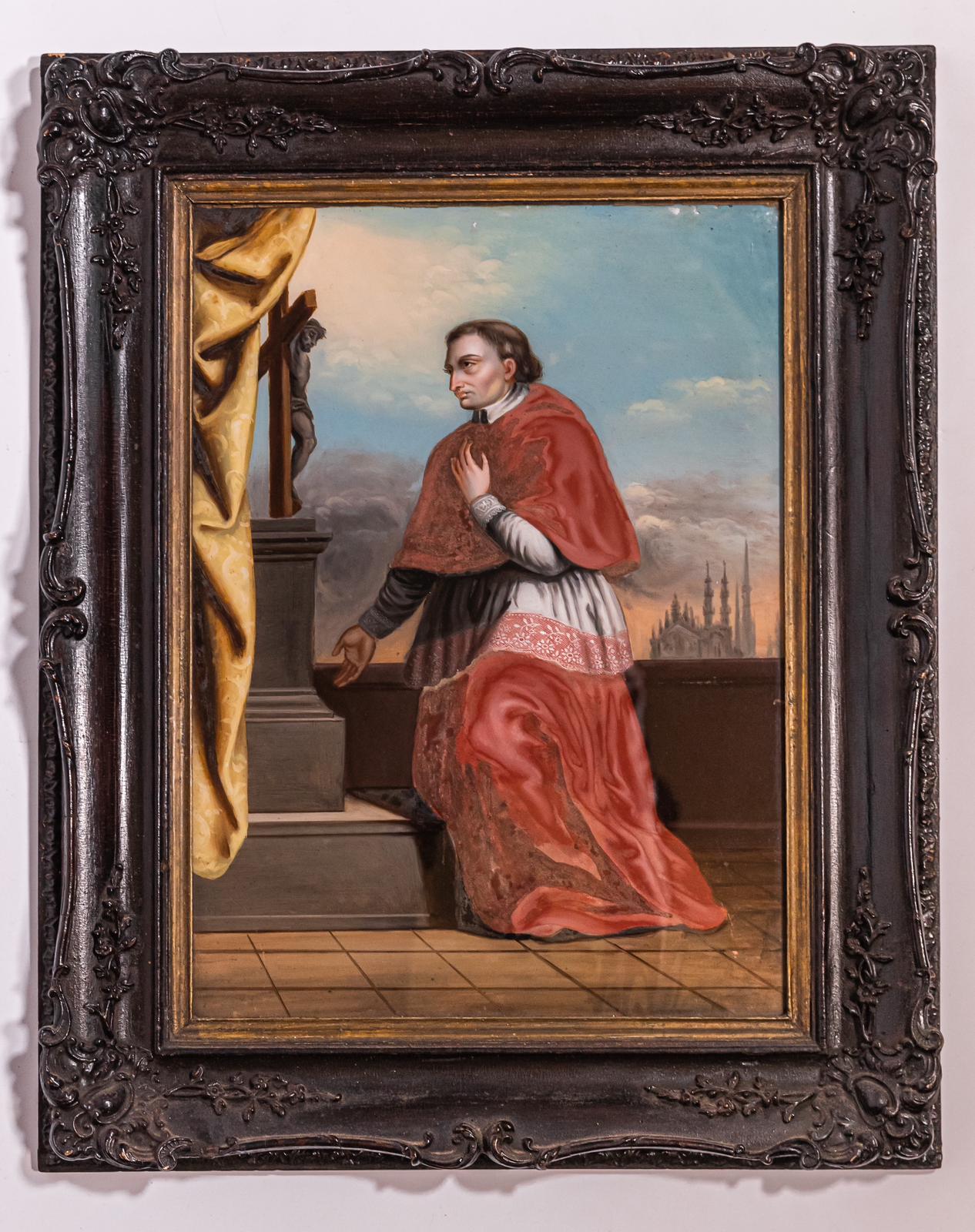Carolus Borromeus with Milan Cathedral in the background
Carolus (or Charles) Borromeus (Latin: Borromaeus; actually Carlo Borromeo) (Arona, October 2 1538 – Milan, 4 november 1584) been Archbishop from Milan, an important church reformer and is a Saints in the Roman Catholic Church.
Back glass painting is an extremely fragile painting technique where directly on glass be painted. When the painting is finished, the whole is reversed so that one looks at the image through the glass. The technique has the advantage that the background (of, for example, a landscape) can be painted last, as it were, over the foreground. The foreground doesn't have to come first. killed-painted as when painting on cloth or on panel.
French profile of a man with the initials R. R. I or J., verre églomisé (ca. 1800), National Museum of Warsaw
A back glass painting has a (literally) flat image, the paint does not lie on the image. This gives the painting more of the impression of a drawing or a photograph of a painting.
The technique is already known from the Classical antiquity, but due to the fragility of the material, few works have survived.
Cennino Cennini (ca 1360-1427) described this method in his Artist's handbook.
In French, the technique is known as (verre) églomisé, to Jean-Baptiste Glomy (1711-1786), who applied it mainly with gold leaf as the background.
In the 20th century, members of Der Blaue Reiter, such as Franz Marc and the German-Dutch Heinrich Campendonk, also back glass paintings.
In Belgium, Ostend and later Antwerp were the centers where this technique was widely spread. Names such as the Ostend maritime painters Wenzeslaus Wieden (1769-1814), François Mesure (1772-1860), Petrus Nefors (1790-1876) and Petrus Weyts (1799-1855) stand out. The latter moved to Antwerp in 1838 and continued this lucrative tradition there, together with his brother and children.

